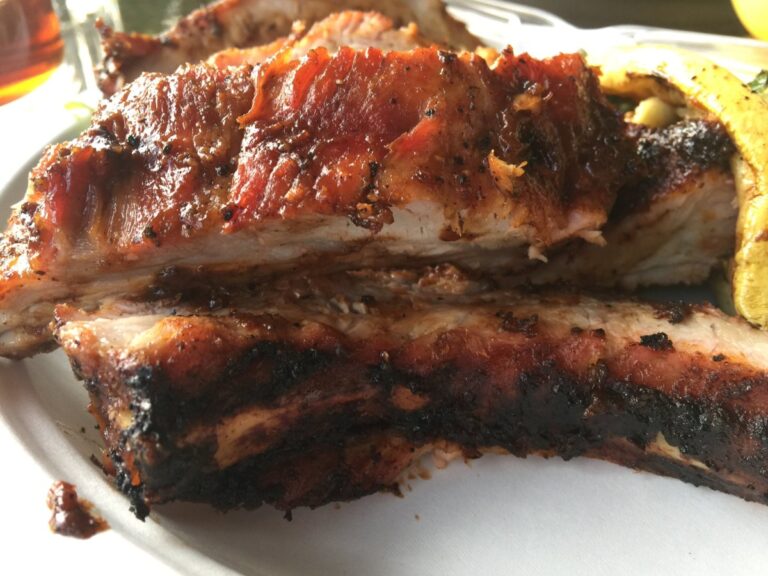The barbecue is one of the most popular ways to cook food. Many different cultures around the world have incorporated barbecuing as an integral part of daily life. In fact, it’s probably fair to say that without this method of cooking, our modern society would be very unbalanced indeed!
But for some reason, many people don’t get it right and end up with a lot of burnt or raw meat. This article will help you prepare your next barbecue meal in order to have more success.
One of the keys to great tasting barbecue is choosing the correct type of grill – charcoal versus gas. The main difference between these two types of grills lies in their heat source; charcoal provides a slower heating process than gasoline-powered units do. In addition to traditional grills, there are specialty barbeque cooking methods such as indoor electric grills for when outdoor barbequing is not possible along with different types of smokers.
Another important factor when preparing barbecue meals at home is how well prepared the meat has been prior to being cooked on the grill. If there are large cuts of meat involved then they should preferably not be frozen but left overnight in a cool place so they can reach room temperature before placing them onto the grill. Also remember that if you’re using fresh produce such as fruits and vegetables from the garden, they need much less time under the grill than meats do.
If you’ve just bought a new BBQ unit, we recommend trying out a few recipes first. You’ll quickly learn what works best for you and also discover which foods actually taste better on your particular model of grill.
So let’s take a look at several tips everyone who plans to host a barbecue needs to know about.
Preparing Your Barbecue Cooking Area
When selecting where you plan to set up your barbecue, consider whether you want to cook indoors or outdoors. Indoor options include wood burning stoves, ovens and even conventional kitchens (with the addition of a small portable electric cooker). Outdoor options include grilling racks, hibachis and traditional fireside braziers.
Whatever option you choose, make sure you select somewhere sheltered from potential windy conditions. To avoid having to use too much fuel, try setting up near trees rather than open areas.
A good tip to keep in mind while planning your layout is to leave enough space to move the coals around during the cooking process. It may seem like common sense but this step is often overlooked by novice chefs. Remember that charcoal burns down quite rapidly once lit and it is therefore important to replenish your fire regularly throughout the cooking process.
Once you have selected your location, make sure you clear away any obstacles within range of the cooking area. These could potentially obstruct airflow during the cooking period and cause problems later on. Another thing to bear in mind is that no matter where you decide to build your barbecue pit, you shouldn’t allow water to come into contact with the hot metal surface. Even the smallest puddle of moisture can lead to rust forming over time.
Choosing A Grill And Charcoal Or Gasoline
There are essentially three categories of barbecue grill available currently on the market. Each type offers its own unique advantages and disadvantages, depending upon the specific situation in which you wish to employ it.
Firstly, there’s the old fashioned charcoal grill. Although still widely used today, this style of grill tends to require more maintenance and cleaning because the charcoal itself doesn’t burn particularly cleanly. As a result, you’ll find yourself spending far longer clearing ash off the grill after each session than you’d expect.
Secondly, there’s the propane/natural gas grill. Propane tanks are generally easier to maintain than charcoal lumps but you’ll still occasionally run across situations where certain foods won’t cook properly due to poor air circulation caused by nearby objects. However, natural gas grills tend to offer greater control over the exact temperatures achieved.
Finally, there’s the pellet smoker grill. Pellets are made of compressed sawdust, nutshells and other plant parts and they provide excellent results when compared to both charcoal and gas grills. They give accurate temperature readings via electronic sensors built into the lid of the grill allowing operators to achieve consistent results every time.
Pellet smokers usually cost more money upfront but they save money in long term running costs since you only purchase pellets once and never again receive another delivery as with charcoal lumps. Additionally, pellets contain fewer toxins and impurities making them safer to smoke with than lump charcoal.
Other special features offered by pellet smokers include adjustable thermostats, various size baskets for holding food, ceramic plates instead of metal ones and insulated handles for keeping hands warm.
In summary, whichever kind of grill you prefer, make sure you always follow manufacturers’ safety guidelines. Make sure you remove all flammable materials within close proximity of the grill including newspapers and rags. Keep children and pets away from the smoking section of the grill completely. Finally, never put anything directly above the flames or resting on top of the bars unless otherwise specified by manufacturer recommendations.
Cooking With Wood Chips
Wood chips add flavor and aroma to grilled items. Using wood chips allows the chef to vary his or her menu according to personal tastes and preferences. Different varieties of woods release varying amounts of volatile oils and impart differing flavors to whatever item is smoked. The following list contains information regarding the basic steps involved in preparing and serving barbecue dishes using wood chip smoke.
Select hardwoods, eucalyptus, mesquite or oak. Hardwood logs emit strong smoke containing aromatic chemicals called terpenes. Terpene vapors combine with oxygen and form smog which gives rise to eye irritation and breathing difficulties. Some cooks prefer mesquite and eucalyptus chips as they contain little or none of these toxic compounds. Oak is preferred by those who enjoy stronger flavored foodstuffs.
Soak wood chips for 30 minutes in cold tap water until fully submerged. Remove chips from soaking liquid and dry thoroughly on paper towels before storing in zip lock bags. Do not store in foil wrappers which encourage condensation formation resulting in mold and mildew growth inside sealed packets.
Place soaked wooden chips in aluminum foil packet(s) and seal tightly. Be careful not to pack chips too closely together as they expand considerably during combustion producing gases which can become explosive. Leave approximately 1″ gap between each piece of wood. Use 2″-3″ overlap along seams.
Light chimney starter filled with soft coal pieces. Allow chimneys to fill with white smoke for 5 minutes then blow ashes back into center of bottom grate through holes located towards rear of upper portion of chimney. Continue lighting additional chunks of soft coal periodically throughout cooking process.
Place lower rack toward front of grill and place food on middle rack. Adjust vents to permit maximum air flow through burner pipes. Open hood vent halfway. Turn exhaust fan on full blast. Cook covered for 10 minutes per pound of meat. After removing cover, continue cooking uncovered until desired level of browning is reached.
Using A Cold Smoke Generator
Cold smoke generators were originally developed to create distinctive “smoke rings” around outdoor grills. Today, however, they are becoming increasingly popular among American consumers interested in achieving authentic regional cuisine. Unlike conventional methods of generating barbecue flavoring, cold smoke uses finely ground tobacco leaves and stems instead of live coals.
Smoked products produced by cold smoke generators typically last 7 days after opening and retain 100% of their original quality. Because cold smoke does not rely solely on high temperatures to generate flavorful fumes, they pose minimal risk of accidental carbon monoxide poisoning.
Although most models are powered by electricity, some operate by hand pump, battery power or solar panels. Manufacturers promise operation times ranging anywhere from 3 hours to 24 hours per charge. Depending on individual preference, owners must determine how frequently they intend to switch their generator on and off.
Don’t Forget The Condiments
Condiments such as ketchup, mustard, Worcestershire sauce and soy sauce play an essential role in adding extra zest and depth to barbecue favorites. Most sauces are based primarily on tomato paste, vinegar, salt, pepper and sugar mixed with seasonings such as garlic powder, onion powder, cayenne pepper and paprika.
While these ingredients are absolutely necessary for creating tasty barbecue sauces, they can sometimes overwhelm delicate spices and herbs found on meat cuts. Therefore, it’s advisable to apply condiments sparingly so as to enhance the overall appeal of your dish without overpowering the subtlety of the main ingredient(s).
It’s worth pointing out here that although barbecue sauce comes in limitless variety, the basic recipe remains unchanged year after year. Once mastered, the art of building complex yet balanced barbecue sauces becomes second nature.
So now you’re ready to start enjoying delicious barbecue meals! Happy eating!



